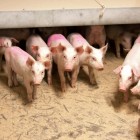Agribusiness
Germs can take shelter behind EU-law
|
The European Union has so far only ”recommendations” and ”support” to offer against resistant germs. A ”stamping out” strategy Norwegian style is ruled out in the EU. [notphone]
[/notphone]
The Commission, the EU’s governmental body and the only institution empowered to propose legislation, has so far taken a cautious stand on the threat of antibiotic resistance. An action plan was put forward in 2011 in what is called a communication (COM/2011/748). EU-ministers in the Council adopted its conclusive points the year after. None of the 12 identified key actions sanctioned by the Council go further than to ”introduce recommendations”, “promote efforts”, “co-ordinate research” and the like; all different expressions of soft law.









